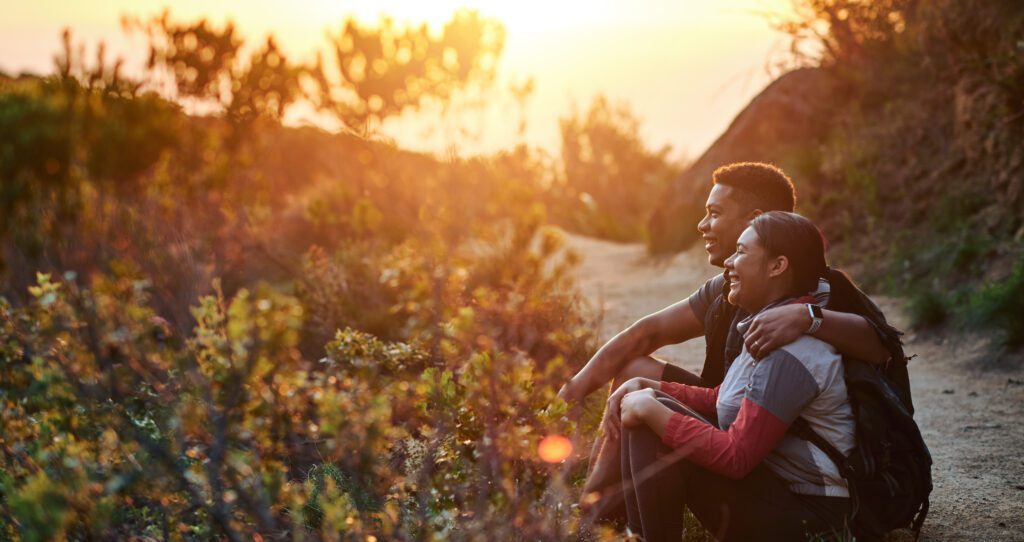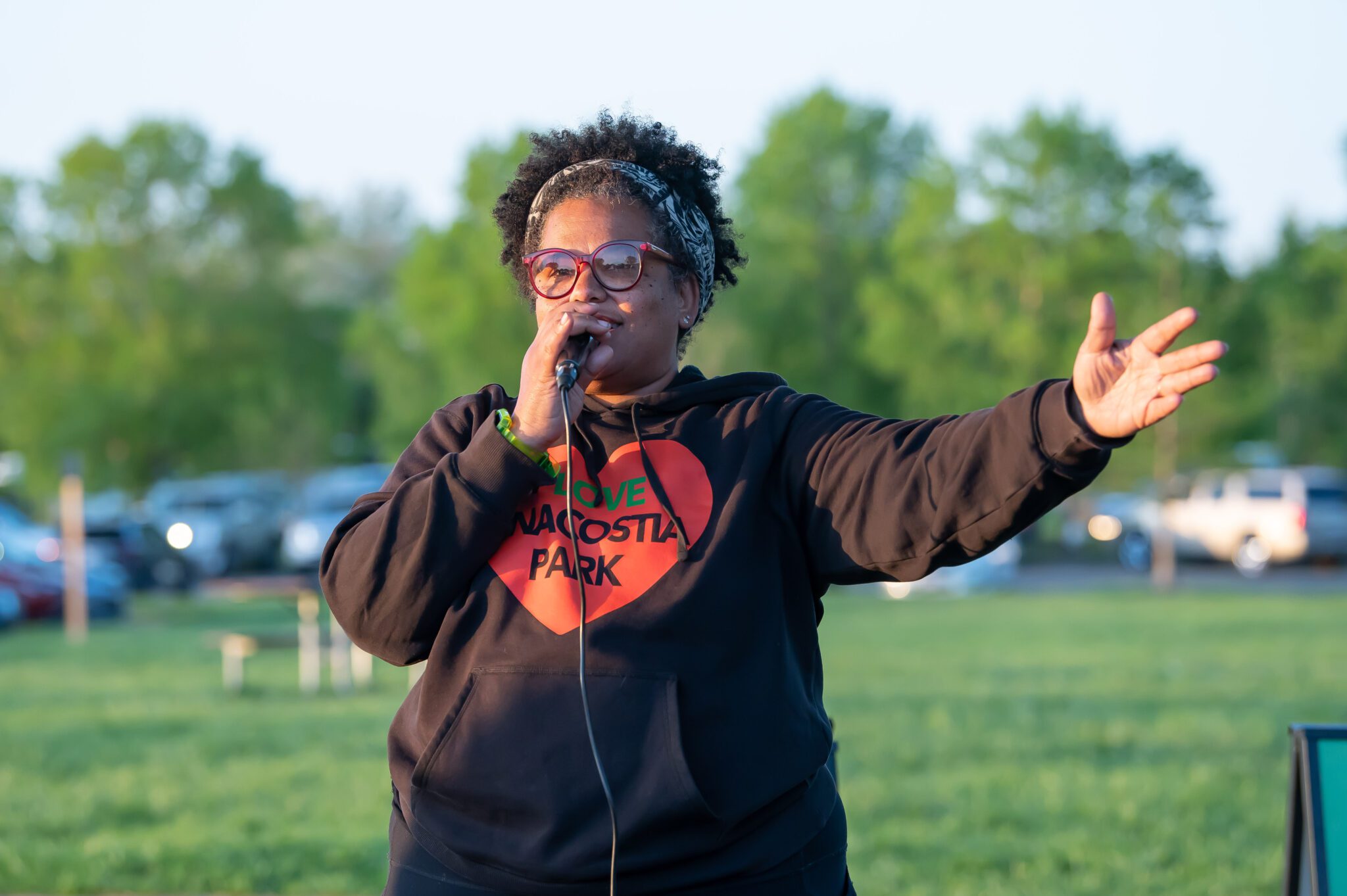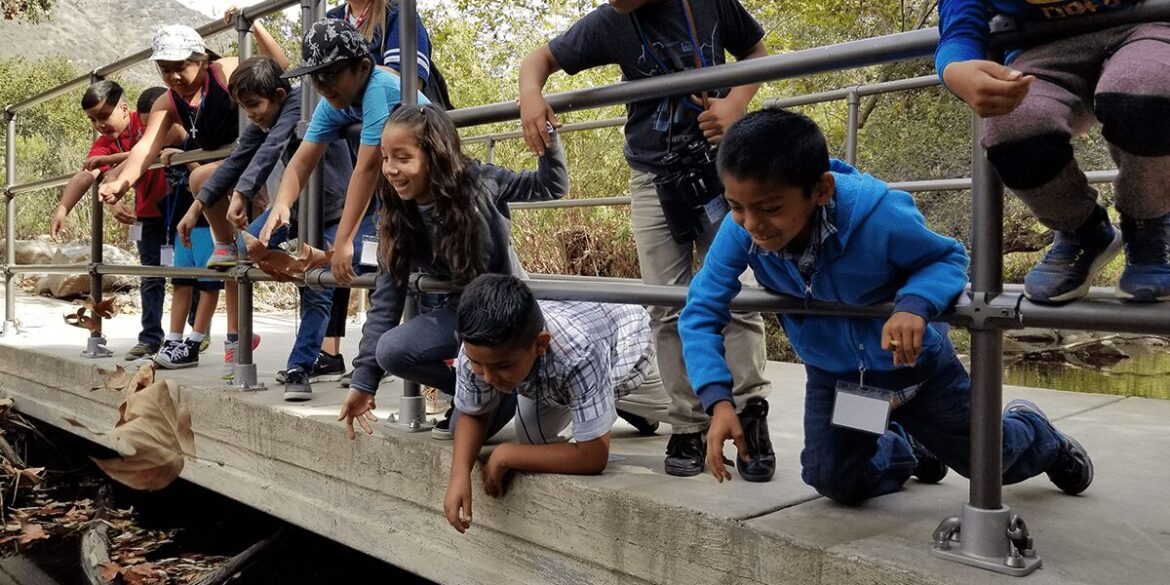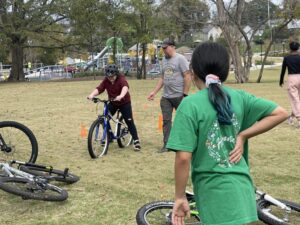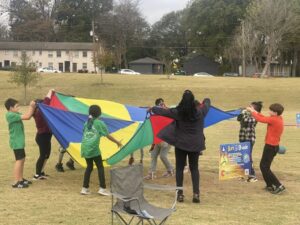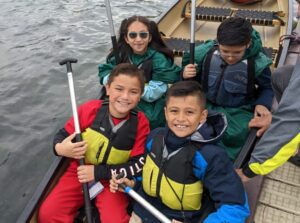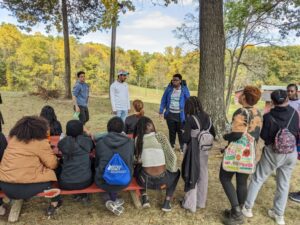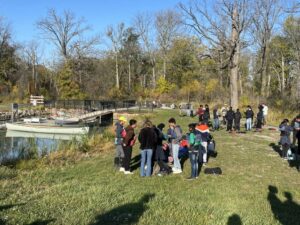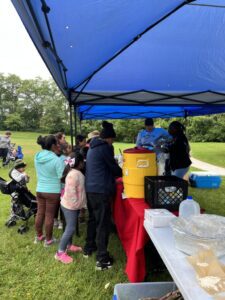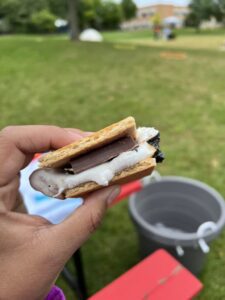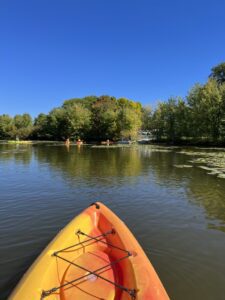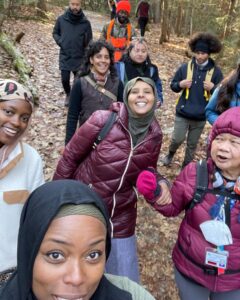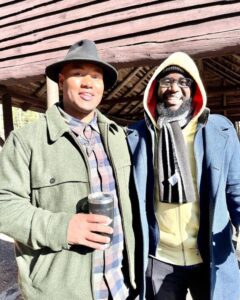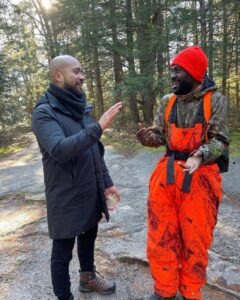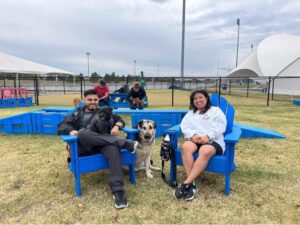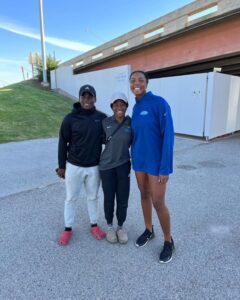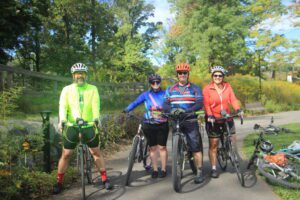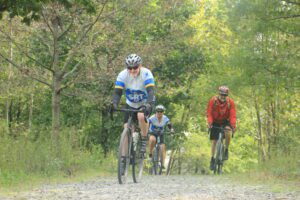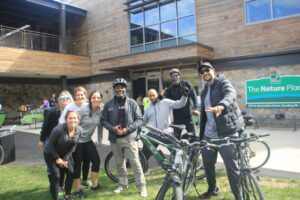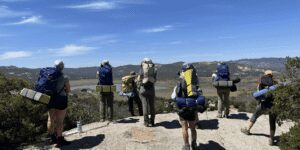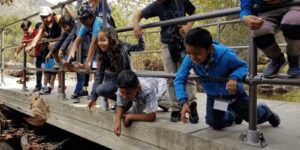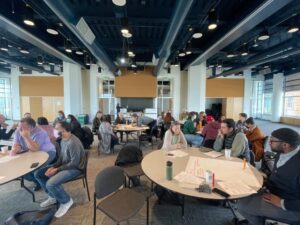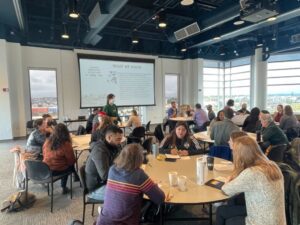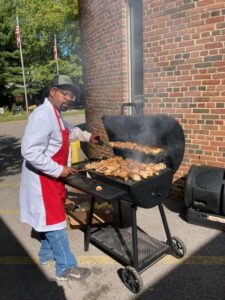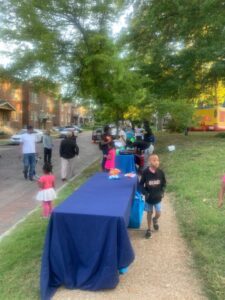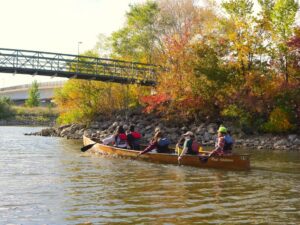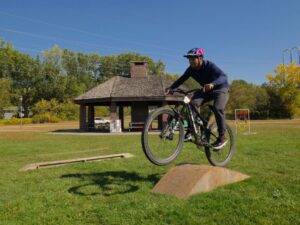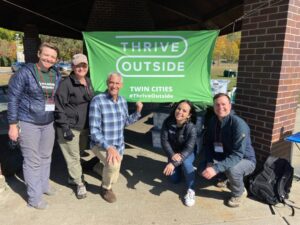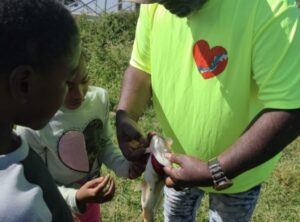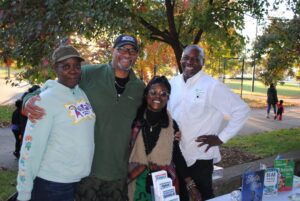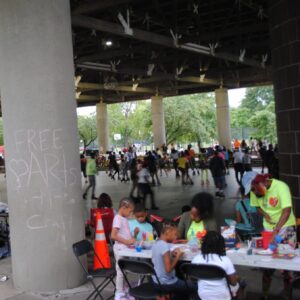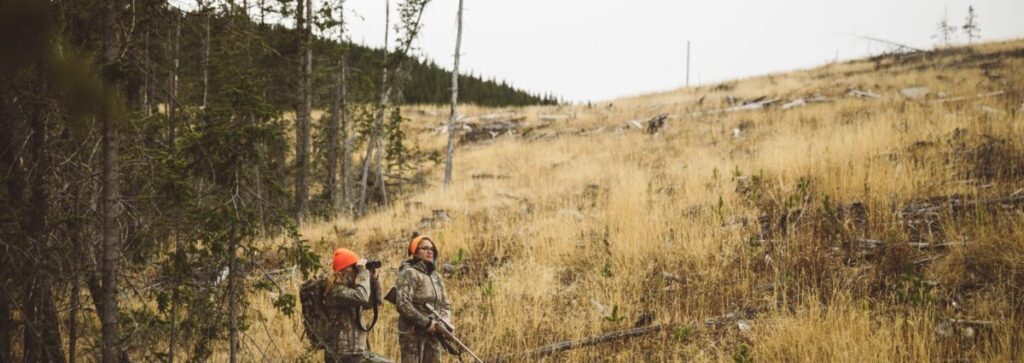Thanks to our community leaders, partners, and participants, our 2022 Thrive Outside Day events were an overwhelming success! Read below to learn how Thrive Outside Communities across the country celebrated our collective work to address equity barriers and ensure the outdoor experience for all.
ATLANTA:
Thrive Outside Day in Atlanta was hosted on November 12 at Rodney Sr. Cook Park in partnership with The Alliance for The Activation of Cook Park. With various outdoor activities to participate in, from mountain biking to a park scavenger hunt, Atlanta really got to see and feel what Thrive Outside is about. Learn more about Thrive Outside Atlanta.
“This was such a beautiful event, it reminds me of field day when I was a kid” — Old Fourth Ward community member
“It is so refreshing to see Black faces advocating for outdoor play and education for our youth.” — Old Fourth Ward community member
“Thank you for allowing us to learn more about your organization through this event. We can’t wait to partner with you all.” — Amphibian Foundation
CHICAGO:
The Nature Conservancy sponsored Organic Oneness’ (OO) Be the Healing: Reparations Conference to celebrate Thrive Outside Day in Chicago. The conference explored innovative approaches to reparations including restoration, repair, and healing at the individual, community, and institutional levels, inclusive of policy changes. Over the course of three days, Dr. Joy DeGruy and Dr. Bahia addressed the historical harm and trauma of racism and colonization through an inspirational and solution-oriented global lens. Chicago community leaders led community tours addressing various ways reparations are being carried out within the ecosystem of their neighborhoods. By addressing racism, trauma, and healing as a collective, Chicago will be more successful in decreasing risk factors and increasing protective factors within education, employment, general health, family structures, and community networks. Learn more about Thrive Outside Chicago.
DETROIT:
Thrive Outside Detroit welcomed the Wilderness Inquiry Canoemobile to town October 10-12 to celebrate Thrive Outside Day. Youth and their families participated in a paddle on local waters with Wilderness Inquiry staff as well as a range of fun and educational land-based activities. Local partners such as Belle Isle Nature Center, Detroit Public Schools Community District (DPSCD), Friends of the Detroit River, Detroit Outdoors, Friends of the Rouge River, and US Forest Service Urban Connections all pitched in to help students experience Belle Isle, the Detroit River International Wildlife Refuge, and DPSCD’s own Camp Burt Shurly. Learn more about Thrive Outside Detroit.
“They can have this powerful experience and then want to come back to this park with their family,” Dempsey says. “They might be the one that says, ‘Hey, let’s go down that trail. I actually know what’s down there. Let’s go see this beaver lodge that’s down there because I did that when I was here last October.’ So they can become the leaders for their friends and their family when they come to this park because they’ve got this relationship with this park.” — Garrett Dempsey, program director of Detroit Outdoors
“There is so much research that supports not only that kids being outside and enjoying nature allows them to bridge connections to what they’re learning in the classroom, but also just from a personal development perspective—for them to have an opportunity to go out of their comfort zone. It’s so formative in their development.” — Monica DeGarmo, teacher at the Academy of the Americas
GRAND RAPIDS:
Thrive Outside Days kicked off on September 24 with an open house at the gear library. Three additional events were hosted in October focusing on building community, especially in the neighborhood around the gear library. Activities included camping workshops, music, gear library tours, kayaking demos, bonfires, and walking local trails. Learn more about Thrive Outside Grand Rapids.
MAINE:
The ECO-BIPOC Thrive Outside Day Maine event was hosted on November 19 at Bradbury Mountain alongside The Third Place. Attendees shared joy, built connections, and hiked together. In addition, the Thrive Outside Maine community sent free State Parks passes to over 235 BIPOC individuals and organizational leaders in Maine, to acknowledge the barrier of cost and the community commitment it takes to overcome it when it comes to access to outdoor spaces in Maine. Through their partnership with Outdoor Foundation as well as The Third Place, Bureau of Parks & Lands, Maine Initiatives, Leonard C. and Mildred F. Ferguson Foundation, and The Nature Conservancy, Thrive Outside Maine is taking action to support access to nature for people of color in Maine, in addition to working on broader systems-change efforts. Learn more about Thrive Outside Maine.
“Nature is critically important to my worldview, my relationship with natural ecologies, and how I live my life. Being in Nature has allowed me to surmount intense obstacles in my life, from growing up in poverty, to stress relief from coping with constant racism and othering to the benefits of being active and maintaining better health. The reality for many Indigenous people in Maine is that a significant number of us still live close to the poverty line or below it. While I understand that park fees are necessary to fund maintenance, if we don’t have programs like yours to support access, we are excluding those who may need it most because they don’t have the resources to vacation in beautiful places, or to travel just for enjoyment. I remember growing up, the only state parks I went to were for school trips. We didn’t have vacations, and if we went to visit Nature it was on the river or at a local lake or pond that was free to access. I never went skiing, kayaking, or sailing. I went to a kid’s camp once, because it was subsidized by a church. And of course, I was required to follow church rules, even though I was Indigenous. We should not have to be indoctrinated into a religion just to get a chance to go to summer camp.” — Mihku Paul
“Being away from home and family is quite hard. Nature connects me to experiences that I had when around the family or activities we used to do. The beach, the trees, the birds…” — Manuel Cruz
“I am at peace and tranquility when walking in nature.” — Hana Tallan
OKLAHOMA CITY:
Thrive Outside OKC celebrated Thrive Outside Day all month long in conjunction with RIVERSPORT’s Outdoor October initiative. Events included the Oklahoma Regatta Festival, Biketober, Dogtober, and the Red Coyote Half Marathon. Partner organizations included USRowing, Yukon BMX, Country Roads Animal Rescue, and Red Coyote Running & Fitness. Activities included rowing races, kayak races, family bike rides, BMX races, SUP with your pup, and a half-marathon. Learn more about Thrive Outside Oklahoma City
PHILADELPHIA:
Thrive Outside Day Philadelphia was hosted by The Schuylkill River Greenways, Berks Nature, and the Alliance for Watershed Education (AWE) on Saturday, September 24. The event included a bike ride on the Circuit Trails’ Schuylkill River Trail and an outdoor education event at the turn-around location, Berks Nature’s The Nature Place environmental center in Reading, PA. Learn more about Thrive Outside Philadelphia.
SAN DIEGO:
Thrive Outside San Diego hosted a series of Thrive Outside Day events throughout the month of October. Event activities included hikes, mountain biking, yoga, gardening, camping, and more. Thrive Outside San Diego’s steering committee member, the County of San Diego Parks and Recreation, also launched the Experience the Outdoors campaign, which is designed to address equity barriers so that everyone can experience the outdoors. Learn more about Thrive Outside San Diego.
“There’s something so special about starting your day, stretching, and finding balance in a park. The fresh air, the birds singing, even the buzzing of the bees. It just puts your body at ease, and I can’t wait to come back!” — Marie, workshop attendee
“I volunteer to do trail maintenance in the other part of the preserve, but it’s always nice to stop here, say ‘hi’ to the rangers, and see what they put out on their table. It’s hands-on, but I learn a lot just by listening in.” — Jose, youth volunteer
“It was great to entertain so many excited kids and to see parents reliving their youth. It’s an educational experience that’s also a ton of fun.” — Kyle Icke, Supervising Park Ranger
SEATTLE:
Thrive Outside Day Seattle was celebrated on October 28. More than 30 outdoor recreation organizations, including Washington State Parks, the Service Board, and Braided Seeds, convened to discuss current issues and access barriers to the outdoors, and highlight the great work already happening in this space. This convening was held in preparation for the launch of the Outdoor Recreation Action Team in early 2023, which will build and strengthen the network of diverse organizations focused on outdoor access and equity. Learn more about Thrive Outside Seattle.
ST. LOUIS:
River City Outdoors celebrated Thrive Outside Day St. Louis in collaboration with Thomas Dunn Learning Center, the Marquette Recreation Center of the City of St. Louis, Connections to Succes, and The Youth Violence Prevention Council. The block party event took place in Dutchtown, which has some of the highest rates of violent crime in St. Louis and is in the footprint of Cure Violence, a violence prevention program that has been introduced to the city in hopes to calm the neighborhood. Streets were shut down to traffic and the fire Department was also there engaging the community. Non-profit agencies engaged the community and shared about the services they provide. Children and their families enjoyed face painting, a bounce house, games, dancing, and arts and crafts projects that they could take home with them. The highlight of the evening was a group of local street performers who danced and did some amazing fire-throwing tricks. Learn more about Thrive Outside St. Louis.
“This is what community looks like.” — Event participant
“Let’s do this every year.” — Event participant
TWIN CITIES:
Twelve local outdoor organizations hosted Twin Cities Thrive Outside Day on October 8 at Boom Island, located right on the Mississippi River in downtown Minneapolis. The event celebrated the transformative benefits of the outdoors while engaging Minnesotans to build community and ensure that everyone has equitable access to outdoor spaces and experiences. Participants enjoyed canoeing, urban birding, mountain biking, hiking with plant identification, youth Zumba, fishing, fire building, and equipment demonstrations. Learn more about Thrive Outside Twin Cities.
“I was able to talk to attendees about recreational opportunities on federal lands and the programs available for getting youth and those with permanent disabilities in parks and forests.” — Partner agency
“It was great to connect with the other organizations at the event. I thought the networking was excellent. Looking forward to hopeful collaboration in the future.” — Partner agency
“Oodles and oodles of fun. We went out on the water, and it was fabulously calm and the trees looked fabulous” — Event participant
WASHINGTON, D.C.:
On Saturday, October 29, members of the Anacostia Park and Community Collaborative and Washington, D.C. Thrive Outside coalition partnered to engage Ward 7 and 8 youth and families in a day-long celebration of family, nature, and the harvest season. This event was co-planned with community input and included a pumpkin and turkey giveaway, Trunk or Treat, and live music featuring Bela Dona, an all-girl, local favorite Go-Go band. Other activities included fishing, boating, skating, and seasonal craft-making. The overall goal of the day was to activate stressed DC residents in safe, meaningful outdoor engagement in Anacostia Park. Learn more about Thrive Outside D.C.
“This is an awesome way to end the season with the community.” — Event participant
“I am so happy I came down here, I did not even know this park was here” — Event participant
